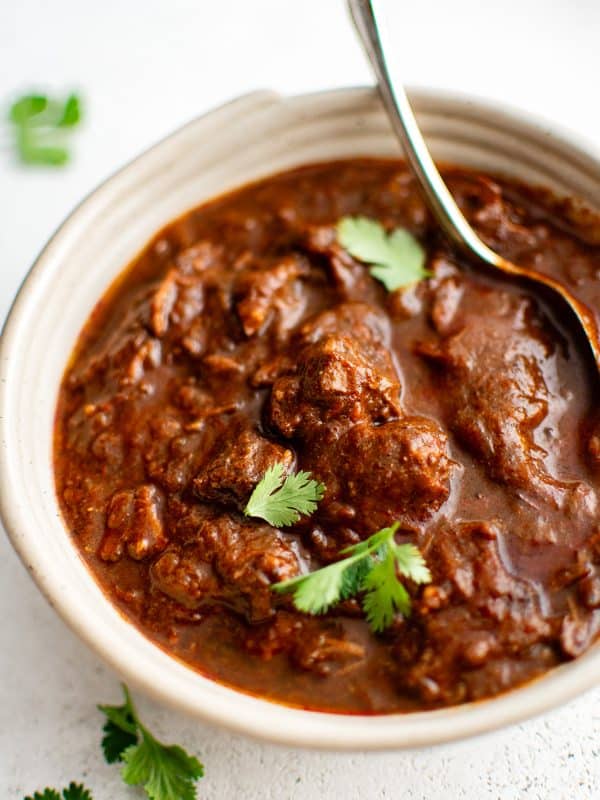This post may contain affiliate links. See my disclosure policy.
This Homemade Cream of Chicken Soup Recipe is a super easy and delicious alternative to store-bought canned condensed cream of chicken soup. Ready in under 20 minutes and made with simple ingredients, add it to your favorite casseroles and creamy chicken dishes.
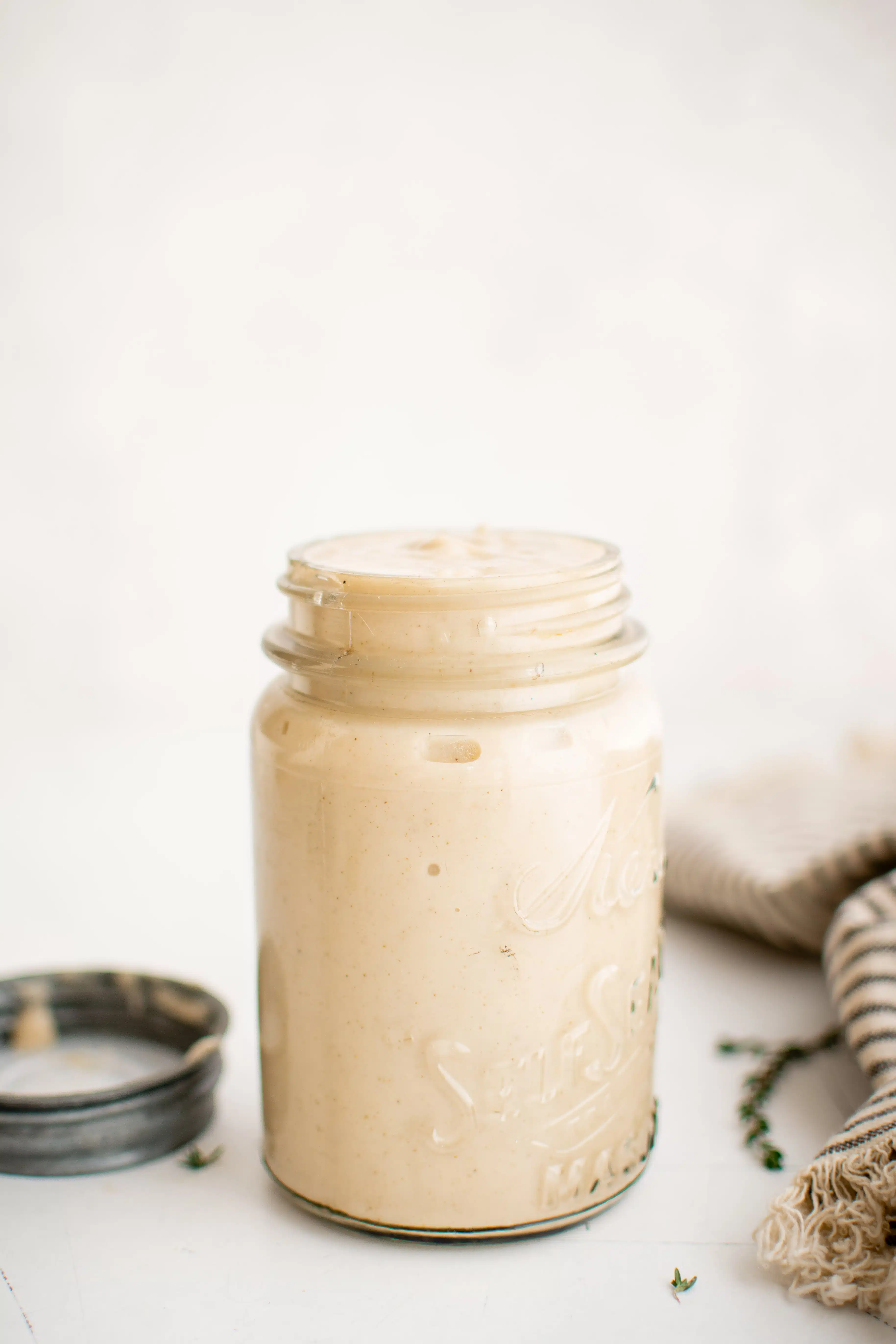
A million times tastier than the canned stuff, you’ll love how simple it is to make this easy recipe!
Table of Contents
Key Ingredients
- Butter and All-Purpose Flour: Also known as the “roux” it is a mixture of fat and flour that is used as a thickening agent. The butter is melted over medium heat, and then the flour is whisked into the fat until combined. The mixture is cooked for a few minutes to remove the raw taste of the flour.
- Chicken Broth: This forms the base of the soup. For a more flavorful soup, use homemade chicken stock.
- Seasonings: This recipe includes onion powder, garlic powder, poultry seasoning, and salt.
- Milk or Heavy Cream: Adds creaminess.
Find the printable recipe with measurements in the recipe card below.
Allergy-Friendly Modifications
- Gluten-Free Cream of Chicken Soup: Replace all-purpose flour with a 1:1 gluten-free flour blend.
- Dairy-Free Cream of Chicken Soup: Use dairy-free milk like rice milk, oat milk (ensure it’s gluten-free if needed), or coconut milk. Avoid nut milks like almond milk if nut allergies are a concern. Replace the butter with olive oil for the roux.
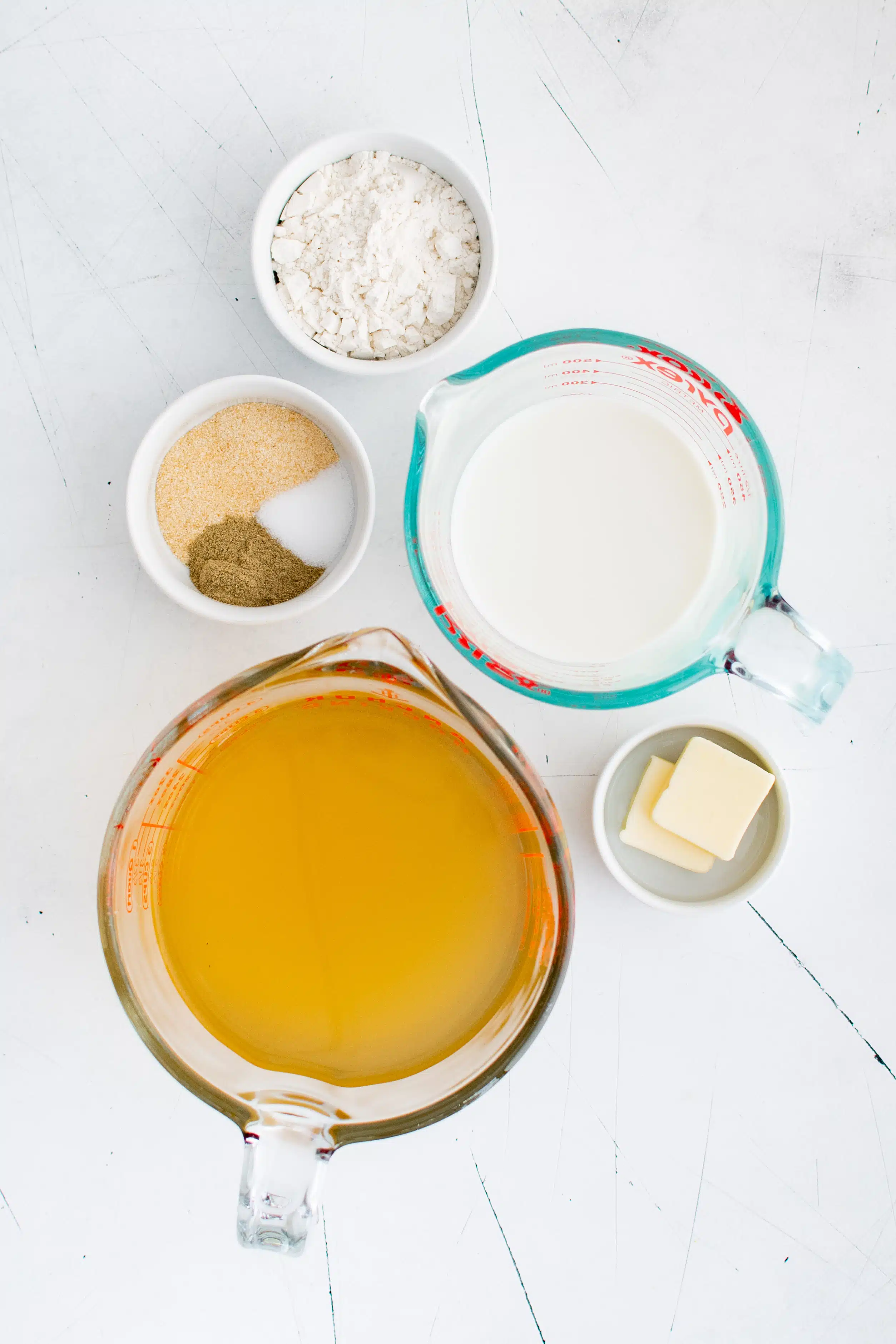
How to Make Cream of Chicken Soup
1. Prepare the Roux: Melt the butter in a large saucepan or Dutch oven. Add the flour, stirring constantly to incorporate it with the butter, creating a roux. Cook it for a few minutes over medium heat to remove the raw flour taste.


2. Add Chicken Broth Slowly: Gradually whisk in the chicken broth. Adding slowly and whisking continuously over medium to medium-low heat prevents lumps.
3. Add Seasonings: Stir in the onion powder, garlic powder, poultry seasoning, and salt.
4. Simmer: Bring to a gentle simmer. Simmer for five minutes or until the soup has thickened enough to coat the back of a spoon (it will continue to thicken upon cooling).



5. Add the Milk: Stir in the room-temperature milk and return to a gentle simmer (do not boil).
6. Cool: Use in your favorite recipes or allow to cool before storing in the refrigerator.

Using as a Substitute for Condensed Soup
This recipe is a 1:1 substitute for canned Cream of Chicken Soup. If a recipe calls for one (10.5 ounce) can of cream of chicken soup, you will need 1 + 1/4 cups of homemade cream of chicken soup.
How To Use It
Homemade cream of chicken soup isn’t something I would recommend eating plain – but it does have loads of versatile uses.
- Base for Soups and Stews: It can be used as a creamy base or thickener for soups and stews, just add your desired vegetables, meats, or grains.
- Casseroles: This is where I find myself using this recipe the most. It’s the perfect (healthier) alternative to store-bought condensed cream of chicken soup. Use in a 1:1 ratio. Some examples include Chicken Noodle Casserole, Poppy Seed Chicken Casserole, and Tater Tot Casserole.
- Sauce for Meats: Use it to make gravy for chicken and pork chops. My favorite example is my dad’s recipe for Cream of Mushroom Pork Chops.
- Pot Pie Filling: So yummy as the base for chicken pot pie!
Storing and Freezing
- Refrigeration: Allow the cream of chicken soup to cool to room temperature before storing. Transfer the cooled soup to an airtight glass or BPA-free plastic container, leaving about an inch of space at the top. Keep stored in the refrigerator for up to 5-7 days.
- Freezing: Consider portioning into individual servings before freezing. This makes thawing and subsequent use easier. Transfer to freezer-safe ziplock bags or containers for 2-3 months. Note: Cream-based soups can change texture when frozen and thawed due to the milk content, but they are still safe to eat.
- Thawing and Reheating: For best results, thaw the frozen soup in the refrigerator overnight before reheating. For a faster method, thaw it in a pot on the stove over low heat. Reheat the soup on the stovetop over medium-low heat, stirring as needed. If the soup has separated or become too thick, add a bit of broth, milk, or plant-based milk to adjust the consistency.

More Homemade Pantry Staples
- Poultry Seasoning Recipe
- Italian Seasoning Recipe
- Bone Broth Recipe (How to Make Bone Broth)
- Buffalo Sauce Recipe
- Applesauce Recipe
- Gyoza Dipping Sauce
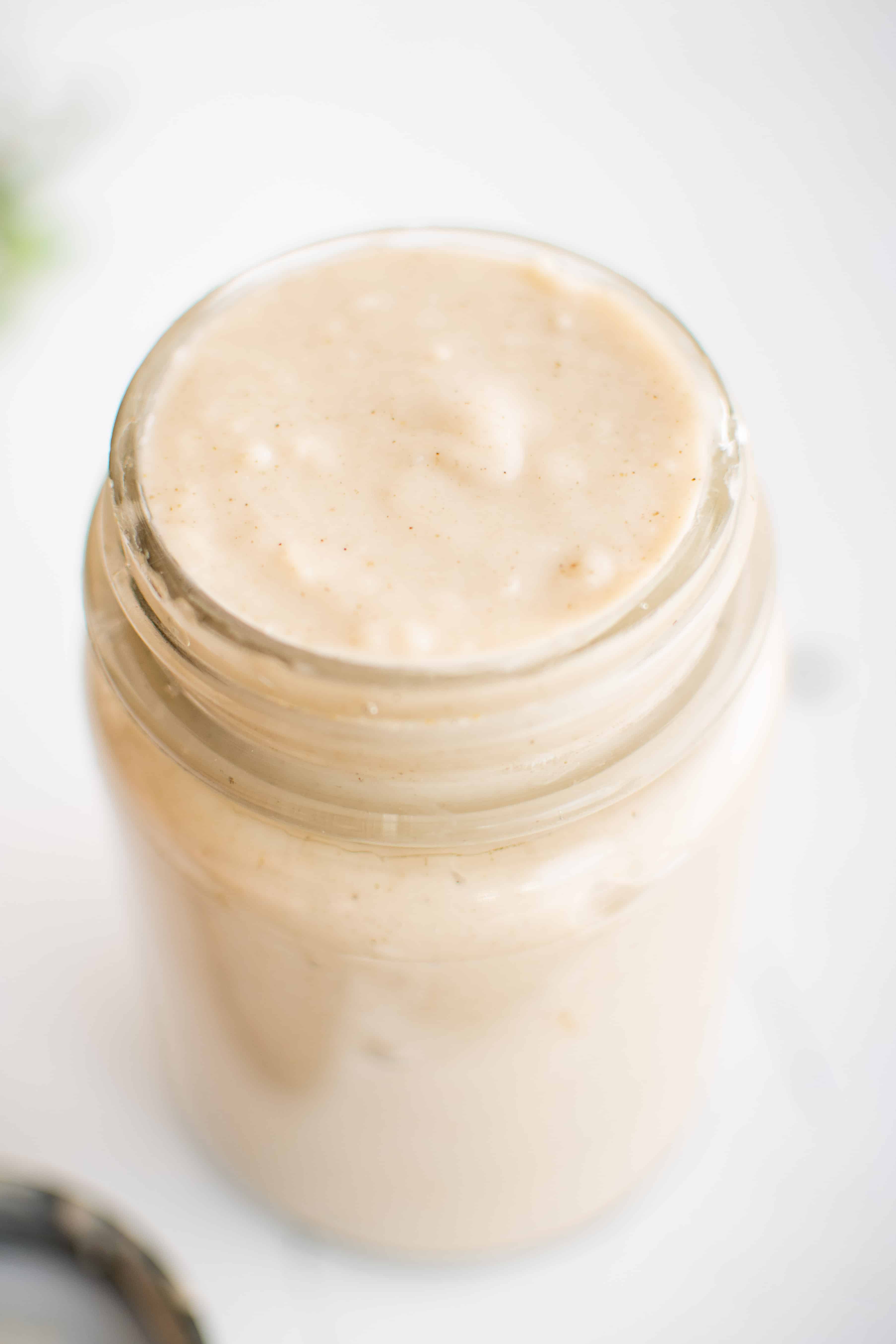
If you try making this Homemade Cream of Chicken Recipe, please leave me a comment and let me know! I always love to hear your thoughts.
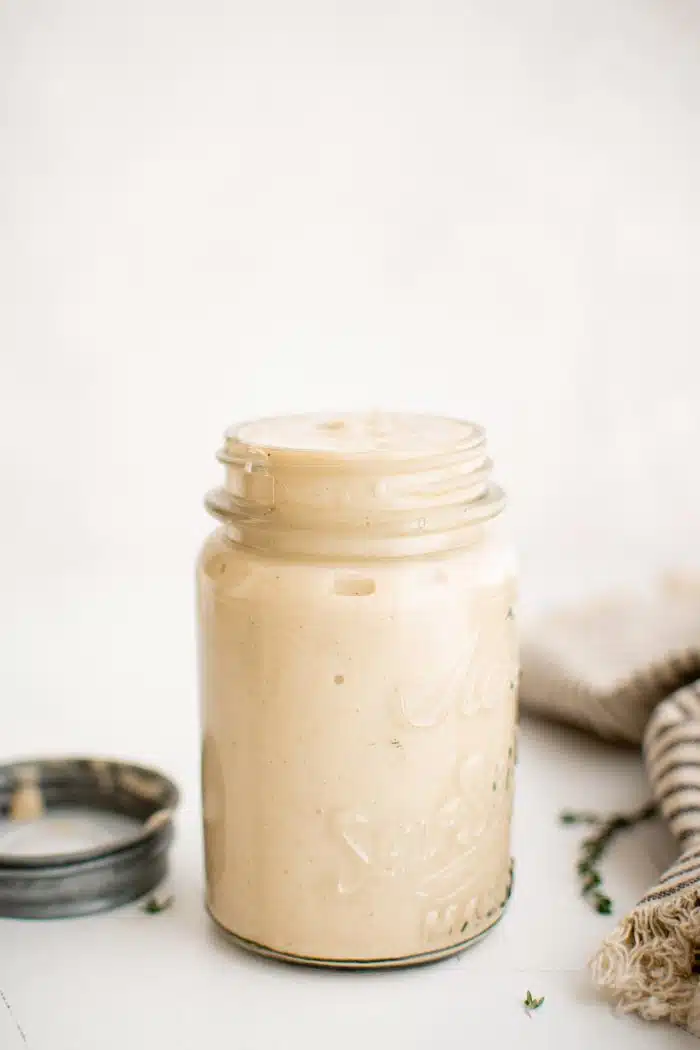
Homemade Cream of Chicken Soup Recipe
Ingredients
- 2 tablespoon salted butter
- ¼ cup all-purpose flour, see notes
- 3 cups low-sodium chicken broth, or chicken stock
- 1 teaspoon onion powder
- 1 teaspoon garlic powder
- 1 teaspoon poultry seasoning
- ½ teaspoon salt
- 1 cup milk, at room temperature
Instructions
- Melt the butter in a large saucepan or Dutch oven set over medium heat. Once melted, whisk in the all-purpose flour and continue whisking until the flour starts to brown (this is called a roux).
- Slowly whisk the chicken broth into the roux until thoroughly combined and the roux is dissolved, then stir in the onion powder, garlic powder, poultry seasoning, and salt.
- Whisking continuously, increase the heat to medium-high and let it reach a simmer. Simmer for 5 minutes or until the soup has thickened enough to coat the back of a spoon.
- Stir in the milk and return to a simmer- do not boil, or the milk may separate.
- Remove from heat. Use immediately as needed, or let it cool to room temperature before storing it in an airtight container in the refrigerator for up to one week.
Notes
- To make gluten-free homemade cream of chicken soup, substitute regular all-purpose flour for certified gluten-free all-purpose flour.
- This cream of chicken soup will continue to thicken as it cools. If you store it for other recipes, you will likely need to scoop it out of the jar/container.
Nutrition
Nutrition information is automatically calculated, so should only be used as an approximation.



